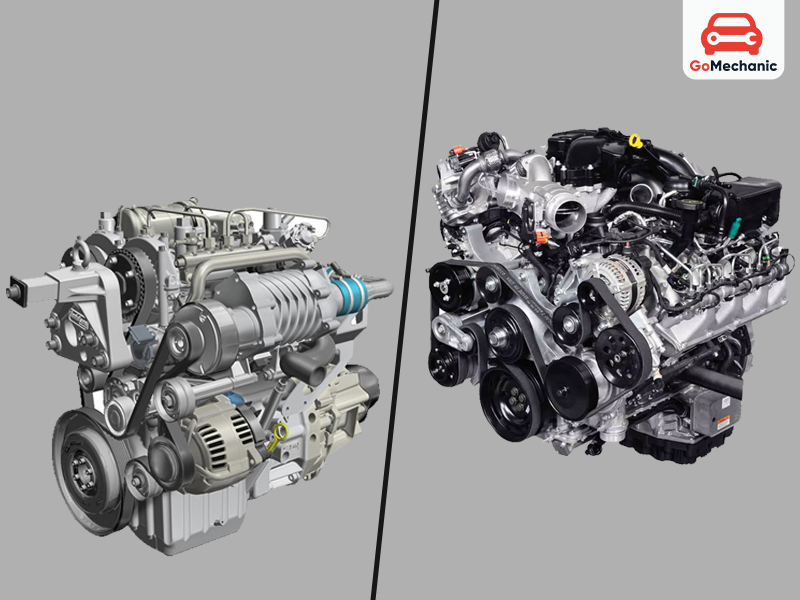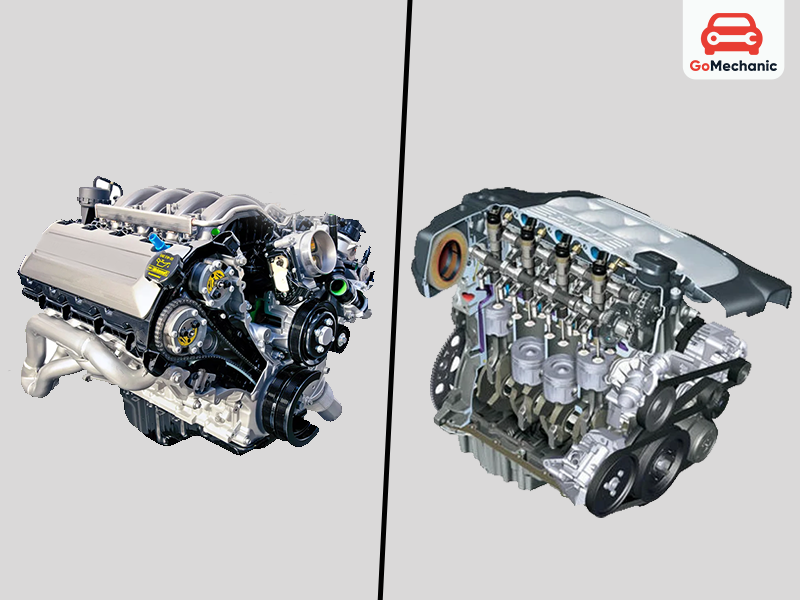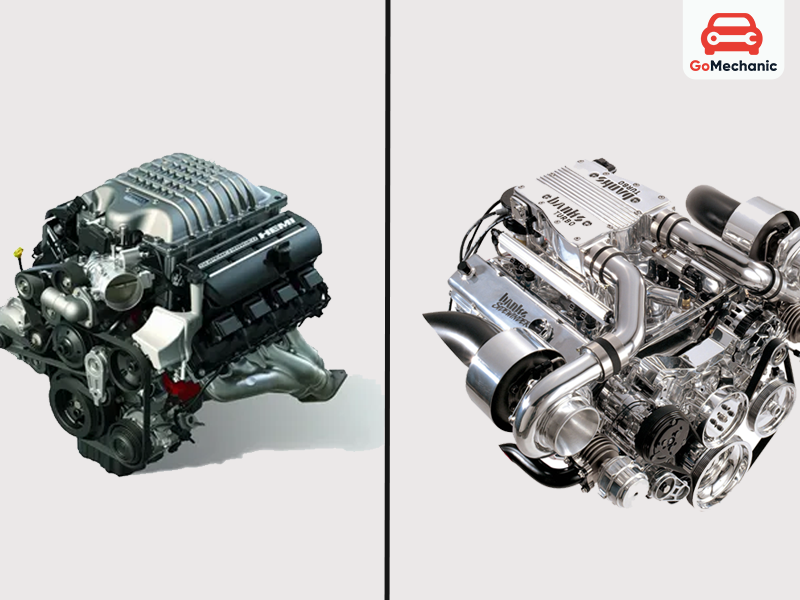When we talk about cars, an engine is no doubt the lifeline of a vehicle. It’s the powerhouse that transforms fuel into motion. Truly understanding the mechanics and types of an engine enhances our appreciation for automotive technology and equips us to make smarter choices.
In this blog let’s look at how exactly they work, their different configurations and why understanding car engine types is crucial for any driver or car enthusiast. Let’s get started!
What are Car Engines?
A car engine is the complete mechanical unit that converts fuel into mechanical energy for powering the car.
Over time, technology has evolved significantly with modern mechanics offering a range of car engine types to suit different performance needs and environmental concerns. These various configurations are a blend of turbochargers, fuel and powertrain options.
Key Parts of a Car Engine
Understanding the various car engine parts can help with maintenance and ensure your vehicle operates well:
- Throttle Body: Controls the air volume entering the engine.
- Ignition Switch: Starts the combustion process by initiating a spark.
- Car Oil: Motor Oil lubricates engine components.
- Exhaust System: Manages waste gases produced after the combustion process.
Turbocharger (Optional): Boosts air intake to increase power output.
All these parts need to work in harmony with other car components for the vehicle to work.
How Does a Car Engine Work?

A car engine is designed to convert fuel into optimal mechanical motion.
This process works on internal combustion where fuel mixes with air, gets compressed, and ignites inside the engine cylinders for power production. This combustion leads to a force that pushes pistons, turns the crankshaft and ultimately rotates the car wheels through complete transmission.
Four-Stroke Engine Working
4 stroke means it completes a combustion cycle with 4 strokes. Let’s discuss these strokes with how a four-stroke engine car works:
- Intake stroke: The piston goes down and creates a vacuum. The whole purpose of a mixture of fuel and air is to fill the cylinder with a combustion mixture.
- Compression: In this step, the piston moves up, compressing the fuel and air mixture, making ignition easy.
- Power stroke: A spark plug ignites the compressed mixture at the top of the stroke. This creates an explosion and forces the piston down to generate power for vehicle movement.
- Exhaust stroke: The piston moves back up, pushing the burnt gases through the open exhaust valve. This clears the cylinder for the next intake stroke.
What is CC in an Engine?
The term cc is still strange for many people. CC stands for cubic centimetres and is a unit used to measure the engine’s total capacity for holding air and fuel. For example, a 100cc engine means it has a total capacity of 100 cubic centimetres.
Higher cc engines produce more power but consume more fuel.
Types of Car Engines

Based on Fuel Compatibility
- Petrol engine: The petrol engine is the most preferred in India. This is due to its affordability but comes with lower fuel efficiency.
Must Read: Secret Steps to Improve Your Car’s Fuel Efficiency
- Diesel engine: For people with heavy vehicles or a daily drive range of over 100 km, this engine is best as it provides a good range with high power.
- Cng engine: This engine runs on compressed natural gas rather than conventional liquid fuels. It provides a higher range than petrol or diesel engines but with less power.
- Electric engine: Electric engines run on the principle of an electric motor and use no fuel to move. Dependency on electrical power makes the range limited.
- Hybrid engine: This engine type uses both the petrol engine and a supporting battery to reduce carbon footprint with higher efficiency.
Based on Cylinder Arrangement
- Inline Engine: The cylinders are arranged in a straight line. This engine type is economical but lacks stability.
- Flat Engine: (Boxer engine) Here, the cylinders are arranged horizontally in two opposing banks. This design offers a low centre of gravity, which improves stability and handling. It carries a higher initial cost and is more complex to produce.
- V-Shaped Engine: As the name carries, these engines have cylinders arranged in a V-shape. This engine is better balanced than the inline engine with additional costs.
- W Engine: This engine’s cylinders are arranged in a W shape. Although these engines produce significant power, they are costly and complex.
Based on Number of Cylinders
- 2-cylinder Engine: This engine type is mostly found in two-wheelers. due to its low power. Exceptions exist such as nano with a twin-cyclinder engine.
- 3-cylinder Engine: This engine is a good choice for someone who isn’t too invested in power but in efficiency, size and reliability. A prime example of V3 are hatchbacks.
- 4-cylinder Engine: These engines provide more power than V2 and V3. They are more reliable and fuel efficient. Swift carries a four-cylinder engine in India.
- 5-cylinder Engine: These are found in luxurious cars and create a warbling sound that is a melody to car enthusiasts.
- 6-cylinder Engine: V6 is known for its balanced power, control and smooth driving experience. Audi and Toyota are the examples with 6 cylinders in them.
- 8-cylinder Engine: This engine gives performance and refinement like no other. Lamborghini Urus is a textbook example of v8.
- 10-cylinder Engine: Performance-oriented cars have v10 in them with a hefty price tag. Examples of V10 are some Lamborghini cars and Audi TT.
- 12-cylinder Engine: This produces the current maximum power an engine could offer with minimal vibration. It enhances the driving experience. Rolls Royce offers V12 in all its variants.
Two Stroke vs Four Stroke Car Engines
| Two-Stroke Engine | Four-Stroke Engine | |
| Power Cycle Competition | Completes in 2 strokes (one up, one down) | Completes in 4 strokes (intake, compression, combustion, exhaust) |
| Crankshaft Revolutions | 1 revolution produces power | 2 revolutions produce power |
| Fuel Inlet & Outlet | Port | Valves |
| Weight & Size | Lighter and simpler | Heavier and complex |
| Torque Production | high torque | less torque |
| Power Output | Higher power-to-weight ratio | consistent and controlled power output |
| Fuel Efficiency | Less | More |
| Emissions | More harmful emissions | Cleaner emissions |
| Engine Oil Needs | Requires more oil (oil burns with the fuel) | Requires less oil |
| Durability | Less durable (more wear and tear) | More durable with a longer life |
| Maintenance | Easier and cheaper | More complex and costly |
| Common Usage | Motorcycles, scooters | Cars, motorcycles, and large vehicles |
Turbo vs Standard Car Engines

Choosing between a turbocharged or a standard engine depends on the performance needs. Turbocharged engines offer increased efficiency and power output without needing a larger engine. On the other hand, standard engines are more affordable, stock and don’t require excessive cooling.
| Standard Engine | Turbocharged Engine | |
| Power Output | Lower power | Higher power and efficiency with a smaller engine size |
| Airflow | Relies on natural airflow | Uses a turbine to increase engine airflow |
| Fuel Efficiency | Less efficient (higher speeds) | More efficient with increased performance |
| Maintenance | Easier and cheaper to maintain | Requires more cooling and premium motor oil |
| Cost | More affordable and widely available | Generally more expensive to purchase |
| Purpose | everyday driving and affordability | Ideal for drivers looking for speed and acceleration |
| Common Vehicles | Regular sedans, SUVs, and budget cars | Sports cars and performance-focused vehicles |
Best Car Engine for You: Make the Choice
Don’t forget to consider alternative fuel engines as hybrids and electric vehicles now offer competitive performance. These newer engines are environmentally friendly and cost-effective in the long run.
Also Read: Why Some Car Brands Have a Strong Resale Value
If you are a family person, a V4 is perfect with its balanced power and great mileage. If you are a car enthusiast a six-cylinder or above will catch your eye. The market is filled with options the decision is up to you. Choosing the perfect engine type depends on your requirements.
Contemplate which engine fits your driving style and make an informed decision. The right engine will keep you confident and moving!





